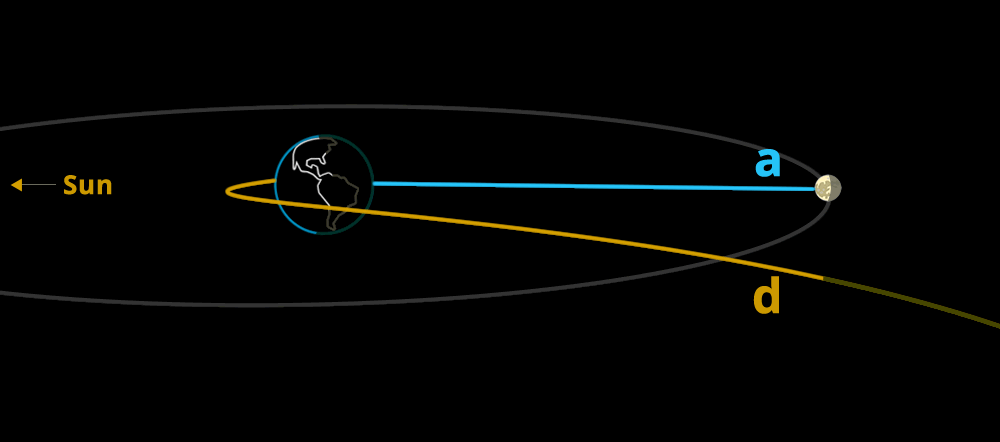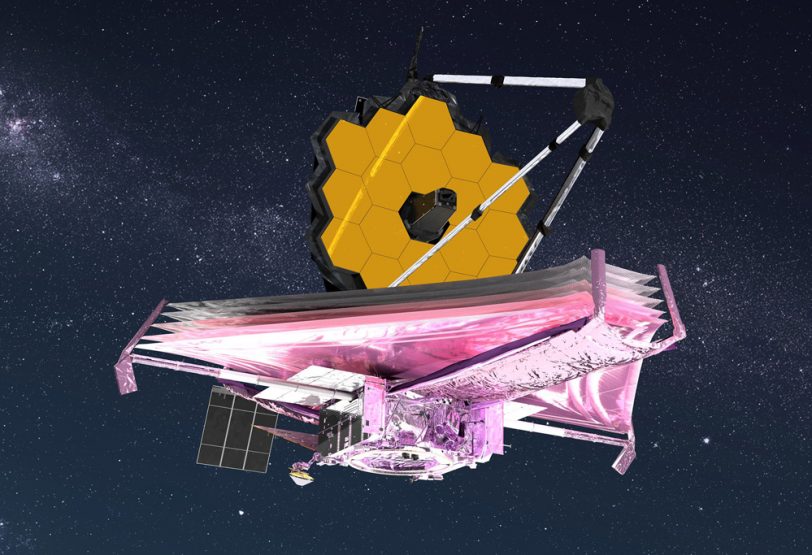A Real-Time Graphic from NASA is Tracking The Webb Telescope’s Long Journey to L2
Webb will now unfurl
The James Webb Space Telescope – successor to the Hubble Space Telescope – is on its way to L2, following a successful launch on December 25, 2021. It was a relief to finally see the $9.7 billion space telescope go up. This telescope has been in development for decades. Astronomers’ hopes and dreams are riding on it. The Webb’s giant mirror has six times the light-collecting surface of Hubble’s mirror. And the launch was only the beginning. Webb, unlike Hubble and thousands of other satellites, will not orbit Earth. It is now traveling to Lagrange point 2, also known as L2, which is nearly 1 million miles (1.5 million kilometers) behind Earth as seen from the sun… or roughly four times the distance between the Earth and the Moon.
It will take about a month for the massive space telescope to reach L2. And, as demonstrated in the excellent short video below, the massive telescope will not remain snug in its packaging during its journey. It will gradually unfold – piece by piece – into its final shape. Hundreds of moving parts must all work together flawlessly. That’s why some engineers are jokingly calling the month after launch “30 days of terror”.
Why L2, and where is it?
Why is Webb going to a point so far away? This point in space – the second Lagrangian point – is where, in the Earth-sun system, gravitational forces and a body’s orbital motion balance each other. So a spacecraft can “hover” relatively easily at L2. It can stay near Earth, while both Earth and the spacecraft orbit the sun.
The main advantage of L2 for Webb is that it is further away from the heat of the sun and the Earth. Satellites in Earth orbit, such as the International Space Station or the Hubble Space Telescope, experience temperature changes every 90 minutes, depending on whether the surface of the satellite is in Earth’s shadow or on the side of Earth closest to the sun. At L2, Webb will not experience this temperature-shifting effect, which has the potential to distort the telescope’s ability to view the universe. Webb will primarily observe infrared light emitted by faint and very distant objects. To detect those faint signals, the telescope must be kept extremely cold: -370 F (approximately -220 C) or lower. That’s why Webb has a five-layer, tennis-court-sized sunshield to protect the telescope from the sun’s rays and keep its instruments cool.
Where is JWST right now?
The NASA’s James Webb Space Telescope has successfully launched, but what happens next? A Real-Time Graphic from NASA is Tracking The Webb Telescope’s Long Journey to L2. Follow along with the development stages and steps as we watch the Webb telescope reach its final destination at Lagrange Point 2 >> https://go.nasa.gov/3z632ZU

‘WhereIsWebb’ shows the status of Webb on its journey to L2 orbit. The page constantly updates as Webb travels, deploys, and cools to operating temperature. The most recently completed deployment step for Webb is displayed along a timeline that also indicates the major deployment phases. Note that the timing, duration and/or order of deployment phases and steps may change. This page shows the default/nominal timing and order.
READ MORE: Watch Incredible Video Of NASA’s Solar Probe Whizzing Through The Sun’s Corona





Why was the telescope named James Webb, could it be it’s images will be available live on the web?